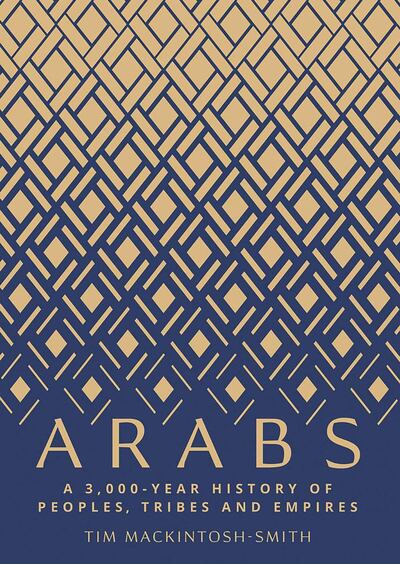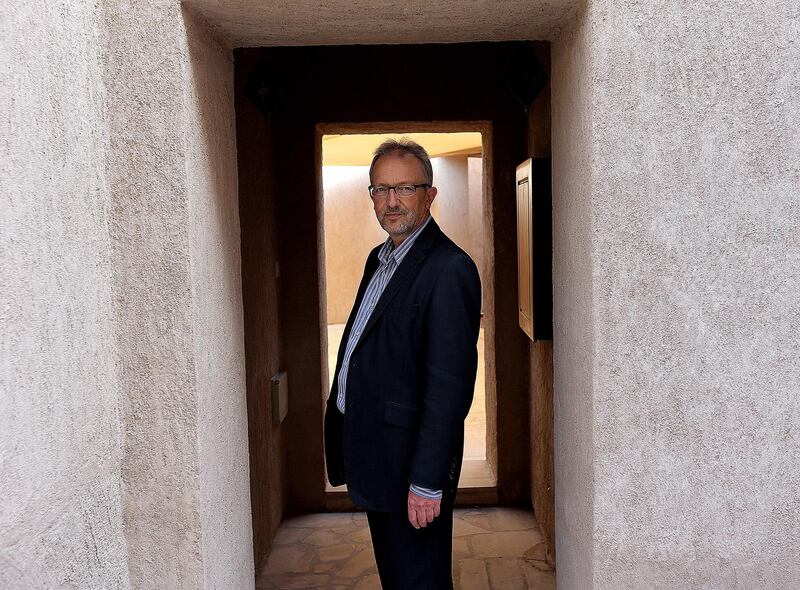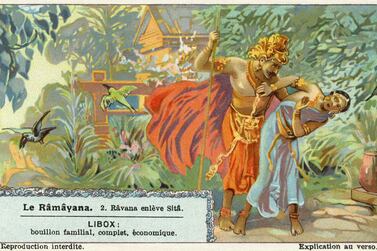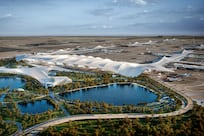Arabist and travel writer Tim Mackintosh-Smith's latest book is more than 600 pages long, but one glance at its subtitle, A 3,000-Year History of Peoples, Tribes and Empires, makes it seem hopelessly small.
Mackintosh-Smith is a Fellow of the Royal Asiatic Society and a Senior Fellow of the Library of Arabic Literature, and, in Arabs, he broadens the scope of his previous books about the region in an attempt to pull in the whole of Arab history.
Entire libraries could be filled with books written about the birth of Islam, the Umayyad and Abbasid rules, the Mongols and the Mughals. But Mackintosh-Smith further complicates the task of documenting Arabian history by stating there is as much to discuss about what took place before the birth of Islam as there is about the events that came after this.
"The first-known ancient inscription mentioning Arabs dates from 853 BC," he says at the beginning of Arabs. "I am writing the first draft of these words in AD 2017; according to tradition, the boy Muhammed was first recognised as a prophet in AD 582 – the precise midpoint between that inscription and now."

An early Arab historian, Al-Masudi, compares "the task of telling the Arab story" to finding a vast pile of gemstones of all different types and sizes and somehow stringing them into a single necklace. "Language, the word, is the hidden thread; it is, after all, what Arab unity has itself so often gathered itself upon," Mackintosh-Smith says.
The language intended here is "not everyday speech, but the rich, strange, subtle, suavely hypnotic, magically persuasive, maddeningly difficult 'high' Arabic language that evolved on the tongues of tribal soothsayers and poets," he says.
It's probably an unavoidable feature of the task at hand that those soothsayers and poets promptly yield the spotlight in the pages of Arabs to traders, warlords and empire-builders. Mackintosh-Smith identifies a "cycle of unification and fragmentation" in what's typically called the Arab world, a cycle pulsing through the history of empires: Assyrian, Roman, Persian, Byzantine, Ottoman, British and American. "It is a cycle that has teeth, but is not necessarily vicious: sometimes the teeth have meshed with imperial interests at the points of contact," he says.
The author's point about the antiquity of Arab history is well-taken, but he's clearly aware that its fragmentary remains make for haphazard reading; his book becomes more readable once Islam comes on to the scene in the 7th century.
Looking back at that seismic event, he writes, it feels as if “a pressure had been building from all the migrations and raids and battle-days, energies that had to find release if they were not to cause implosion”. It was at this point, Mackintosh-Smith writes, that “Arabs would all agree to dream the same dream, and to make it a waking reality”.
This shared dream exaggerated that cycle of unification and fragmentation, and Mackintosh-Smith follows those fluctuations through 1,000 years of history, all told eloquently. He notes that one of the problems woven into the DNA of the dream was that its "moral ethos" remained tribal and pre-Islamic.
"For the moment, Arabs were so busy trying to chew the territories they were biting off that they had no time to ingest, let alone digest, the ethical implications of Islam," he writes.
This sets up a foundational imbalance, a narrative tension between triumph and internecine warfare, as one Arab polity after another, from the Umayyads to the Abbasids to the modern era, seeks to find a binding force – not so much pressure, as Mackintosh-Smith writes, but gravity. As the book's larger narrative reaches the present, tension and fragmentation increase.
The author's experiences in Yemen are reflected outward to the broader stage of the Arab world, and melancholy colours more and more of the narrative. Mackintosh-Smith characterises that as a yearning for the centuries of conquest, and for the shared dream, and he sounds the familiar caution against such a desire.
“Nostalgia is an underrated force in history: time goes forward; but people often flee backwards, from crisis and complexity to imagined simplicity and purity,” he writes in the book. “The past can be another country, but it can also be a homeland.”
Arabs may conclude on this kind of watchful, grim note, but the bulk of this astounding book portrays grand personalities, national journeys and thrilling adventures, all seen through the prism of Arabic language. It's a thoroughly remarkable achievement, unlike any other such history, and with its own quiet lessons to impart.







